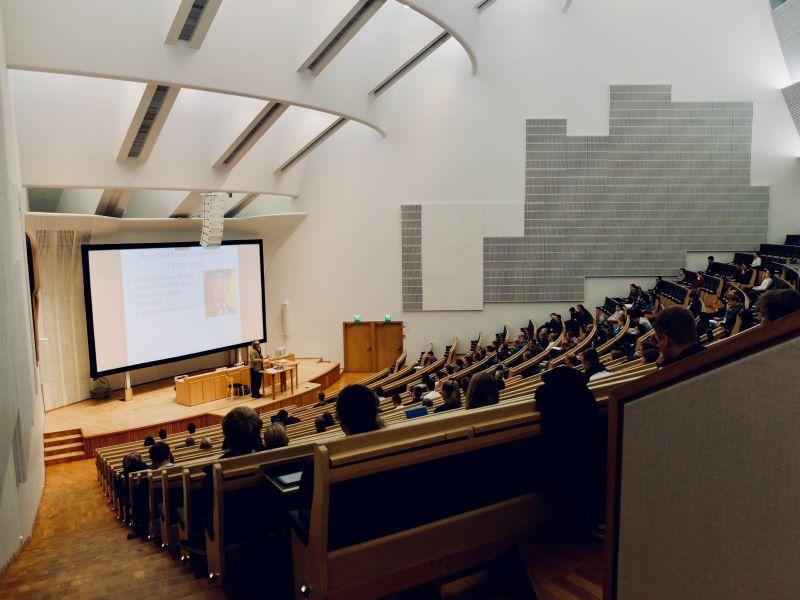
The digital shift will have many (positive) side-effects
Even the laggards in higher education have now had a crash course in delivering online education. And while Zoom classes certainly don’t qualify as cutting-edge pedagogy, it’s clear that the past 18 months have sped up the digital transformation of HE around the world.
Online programme management (OPM) providers and learning platforms such as 2U, Coursera and EdX have all seen massive growth. In the US, for one, six in 10 Americans now say they would prefer fully online or hybrid higher education even if the pandemic weren’t a factor. And senior executives, boards and faculty have all seen that even enormous change is easier than they imagined − while also feeling the negative effects of being caught flat-footed. Institutions that had a strong technology and data infrastructure in place when the pandemic hit were able to leap ahead of the many others who didn’t.
- Why hybrid learning needs hybrid faculties
- Bring your learners to life through personas
- A look back over 10 years of Moocs
There’s now broad acceptance that more investment in technology, digital tools and online pedagogy is needed. The intended benefits of tech investments are numerous: greater flexibility and access for students; efficiencies from modernising back-end systems; and improved student outcomes through predictive models, to name just a few.
And as institutions embrace digital transformation even more in the coming months and years, there will be other unexpected − but welcome – outcomes we can expect to see.
Services get better for everybody
Systems designed to support online students are often also better at supporting on-campus students. At Arizona State University (ASU), we found that when we designed online services for our fully remote students, our on-campus students wanted to use them, too. How many students want to wait in line at the bursar’s office or have to call to have a financial aid question answered?
By making online services available to all students, we’ve expanded access and, in many cases, reduced wait times. For example, Philip Regier, university dean for educational initiatives and CEO of EdPlus at ASU, recently noted that innovations designed for online learners have enabled the university to dramatically reduce the time between a student’s completing the application form for financial aid and receiving their aid package. That, ultimately, gives all students more time to make informed enrolment decisions.
Overall student engagement may go up
No doubt, research on the impact of the pandemic has shown that a significant number of students struggled with time management and engagement in this fully remote environment. But in a normal year, the availability of digital tools and learning spaces may actually increase overall engagement.
First, remote education delivered over Zoom is not the same quality as online and hybrid courses that are deliberately designed to incorporate digital tools and pedagogy. Second, in a typical year, students who prefer to attend classes in person and ask staff and faculty questions face to face still have that option, while expanding online options gives students who do better over chat, text or online platforms a choice that’s better suited to them. Digital communication tools don’t take away the in-person option, they expand choice.
Students naturally create learning portfolios
As students take courses entirely online − or do more of their work using online tools and platforms − the institution is capturing a digital record of their learning. Without any additional effort on students’ part, these records can be memorialised in badges, microcredentials or portfolios that go with them into the working world. This allows learners and employers to more easily unpack the knowledge, skills and abilities that underlie a specific individual’s degree.
That’s the idea behind the push for comprehensive learning records, which would bring together digital information on formal education with co-curricular learning, work-based training and experiences. Institutions such as the University of North Texas at Dallas have been successfully experimenting with the approach, and while comprehensive records are still in their infancy, the model is expanding.
Institutions can break free of physical constraints
Digital transformation removes physical limitations that many institutions don’t even realise are framing how they think. Growth and the bounds of an institution take on new meaning when classrooms and offices play a diminished role. As institutions introduce more fully online or hybrid programmes, decisions about enrolment can be less about physical space and more about educational quality and mission. Buildings can also be reimagined to encourage more engaged learning. Lecture halls can be repurposed into maker spaces or collaborative learning labs, and new buildings can be designed with fewer classrooms and offices and more shared spaces. In short, as institutions embrace digital transformation, the physical spaces they do have become less about basic operations and more about community.
“Side-effects” such as these are in some ways the most revolutionary thing about digital transformation, creating major opportunities to improve efficiency and student success. They show that when technology is truly embedded in the enterprise, it moves from being a cost centre to an asset. To begin to realise that effect, colleges and universities don’t have to make massive investments, they just need to start somewhere, and as technology and online learning become a more routine part of their work, the benefits accrue.
And in the not-so-distant future, we’ll look up and realise that our digital transformation has not only increased flexibility and access, it’s also changed higher education for the better in ways we never expected.
Rick Shangraw is president of Cintana Education. Before joining Cintana, he spent 15 years as a faculty member and senior executive at Arizona State University.
Wayne Bovier is CEO and co-founder of Higher Digital.
If you would like advice and insight from academics and university staff delivered direct to your inbox each week, sign up for the Campus newsletter.




